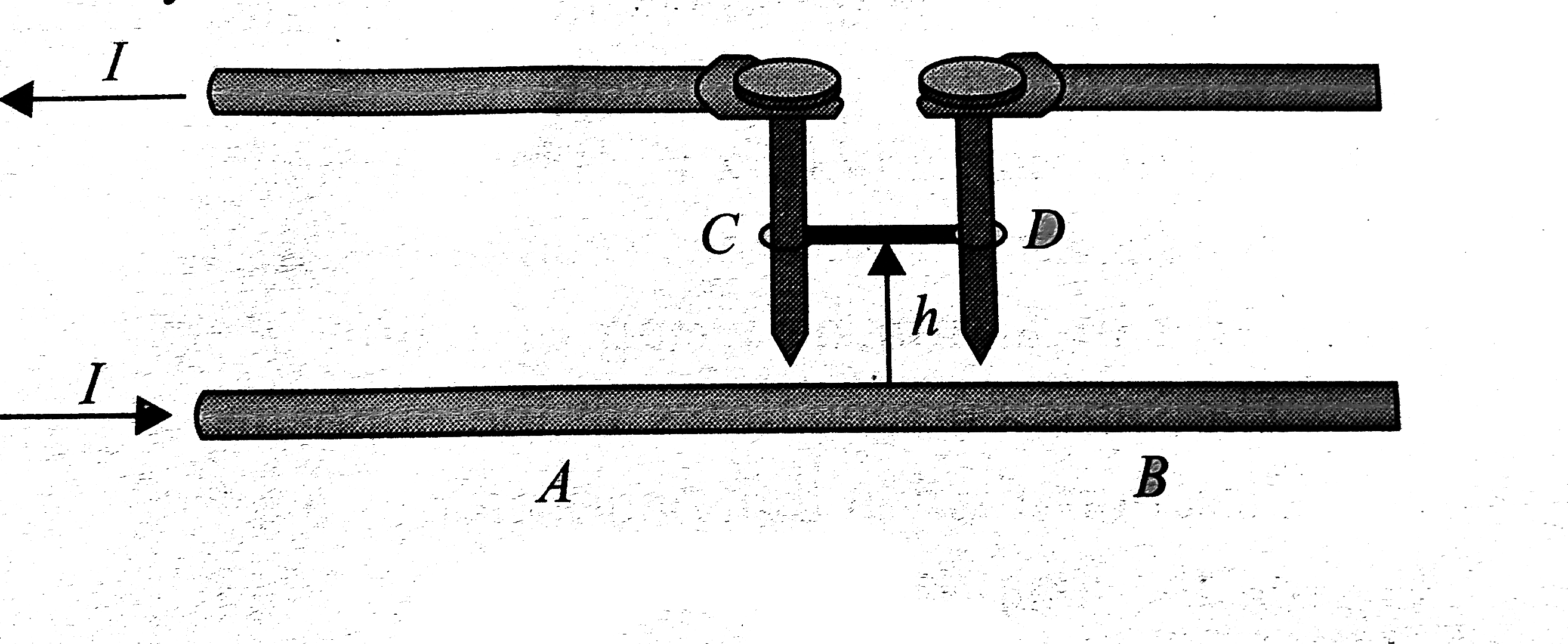A long, horizontal wire AB rests on the surface of a table and carries a current I. Horizontal wire CD is vertically above wire AB, and is free to slide up and down on the two vetical mental guides C and D (as shown in Fig) Wire CD is connected through the sliding contacts to another wire that also carries a current I, opposite in direction to the current in wire AB. The mass per unit length of the wire CD is λ. To what euqilibrium heigth h will the wire CD rise, assuming that magnetic force on it is wholly due to the current in wire AB?

Video Solution
Text Solution
The correct Answer is:μ0I22πλg
We need the magnetic and gravitational forces to cancel.
λLg=μ0I2L2πh⇒h=μ0I22πλg
|
Updated on:21/07/2023
Topper's Solved these Questions
- BOOK - CENGAGE PHYSICSCHAPTER - SOURCES OF MAGNETIC FIELDEXERCISE - Exercise (single Correct )75videos
SOURCES OF MAGNETIC FIELD
- BOOK - CENGAGE PHYSICSCHAPTER - SOURCES OF MAGNETIC FIELDEXERCISE - Exercise (multiple Currect )5videos
SOURCES OF MAGNETIC FIELD
- BOOK - CENGAGE PHYSICSCHAPTER - SOURCES OF MAGNETIC FIELDEXERCISE - Concept Exercise 2.210videos
SOURCES OF MAGNETIC FIELD
- BOOK - CENGAGE PHYSICSCHAPTER - SEMICONDUCTOR ELECTRONIC : MATERIALS, DEVICES AND SIMPLE CIRCUITSEXERCISE - QUESTION BANK12videos
SEMICONDUCTOR ELECTRONIC : MATERIALS, DEVICES AND SIMPLE CIRCUITS
- BOOK - CENGAGE PHYSICSCHAPTER - THERMAL PROPERTIES OF MATTEREXERCISE - Question Bank40videos
THERMAL PROPERTIES OF MATTER
Similar Questions
Knowledge Check
- Question 1 - Select One
Two free parallel wires carrying currents in opposite direction
AAttract each otherBRepel each otherCNeither attract nor repelDGet rotated to be perpendicular to each other - Question 2 - Select One
Two free parallel wires carrying currents in opposite directions
Arepel each otherBattract each otherCneither attract nor repelDmay attract as well as repel under different values of currents - Question 3 - Select One
Two free parallel wires carrying currents in opposite directions
Arepel each otherBattract each otherCneither attract nor repelDmay attract as well as repel under different values of currents.
Two free parallel wires carrying currents in opposite directions
View SolutionTwo long parallel conducting wires carry current I in same direction, placed at distance b. Force per unit length of wire is
View SolutionThe field due to a long straight wire carrying a current I is proportional to
View SolutionA field due to a long straight wire carrying a current I is proportional to
View SolutionThe field due to a long straight wire carrying a current I is proportional to
View Solution

